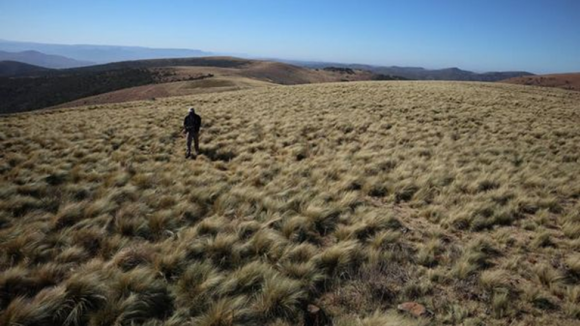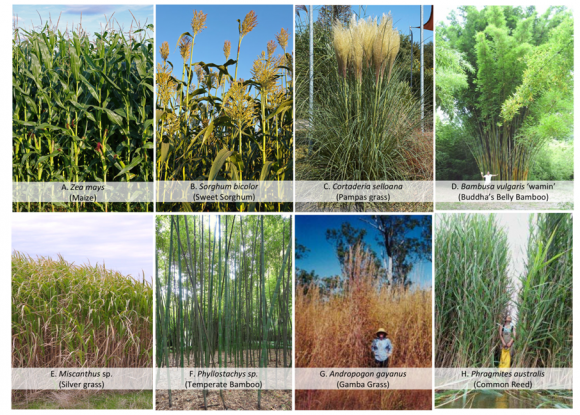31 March 2015 | By Vernon Visser
Millions of years ago a number of species independently evolved a new type of photosynthesis that allowed them to cope better with low CO2 concentrations in the atmosphere. This “innovation” is called C4 photosynthesis and despite evolving a number of different times, it evolved within just a few groups of plants, most notably among the grasses. C4 photosynthesis had the additional benefit of allowing plants to use water more efficiently and thereby allowing them to be more productive, especially in water-stressed environments. Some of the world’s most important crops such as maize and sugar cane use C4 photosynthesis, but so do many of the world’s worst grass invaders such as buffel grass (Cenchrus ciliaris) and molasses grass (Melinis minutiflora).
A recent paper by Colin Osborne (University of Sheffield) and colleagues, including C·I·B post doc Vernon Visser, is the first attempt to catalogue the type of photosynthesis used by every known grass species. In this endeavour it was more than successful, covering 99.6% of all known grass species.
“This information should be invaluable to researchers, including for invasion scientists wanting to understand the role that C4 photosynthesis plays in allowing species to become invasive.” Says Vernon Visser, co-author of the paper published in the New Phytologist. “More generally, this information will help us to better understand the evolution of this type of photosynthesis and will be useful for all sorts of things, including mapping global species richness of C3 and C4 grasses.”
Read the paper
For more information, contact Vernon Visser at vernonvisser@sun.ac.za


